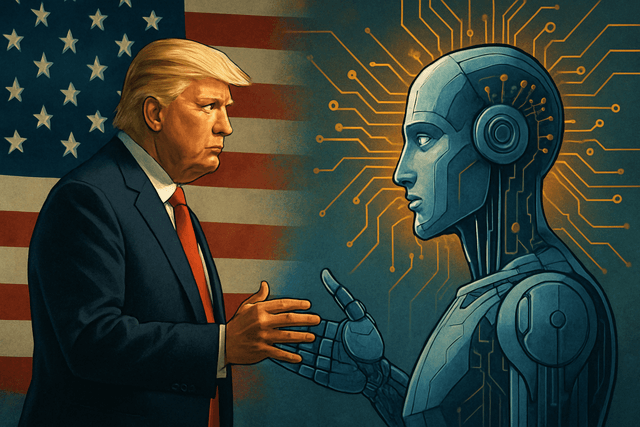President Donald Trump unveiled a sweeping artificial intelligence strategy on Wednesday, positioning the United States to win what his administration describes as a critical global race for AI dominance.
The "America's AI Action Plan" identifies more than 90 federal policy actions designed to establish the US as the undisputed world leader in AI technology. "From this day forward, it'll be a policy of the United States to do whatever it takes to lead the world in artificial intelligence," Trump declared at the announcement event hosted by the All-In Podcast and the Hill and Valley Forum.
The plan is structured around three strategic pillars. First, it aims to accelerate innovation by removing what officials call "bureaucratic red tape" that could hinder AI development. Second, it focuses on rapidly building American AI infrastructure, including streamlining permits for energy-hungry data centers and semiconductor manufacturing facilities. The third pillar emphasizes making American hardware and software the "standard" platform for AI innovations worldwide through strategic exports.
A key component involves the Departments of Commerce and State partnering with industry to deliver "full-stack AI export packages" – including hardware, models, software, and standards – to American allies. The plan also addresses domestic energy needs, with recent announcements of over $90 billion in investments from companies like Google, Blackstone, and CoreWeave to develop AI and energy infrastructure in Pennsylvania.
The White House AI and Crypto Czar David Sacks emphasized the competitive nature of AI development: "It's a global competition now to lead in artificial intelligence, and we want the United States to win that race." The plan also includes provisions to ensure AI systems procured by the federal government are "objective and free from top-down ideological bias."
Critics, including a coalition of over 80 labor, environmental, and civil rights groups, have expressed concerns that the plan prioritizes industry interests over safety considerations. They released a competing "People's AI Action Plan" that calls for greater focus on protecting workers, consumers, and the environment as AI technology advances.
The Trump administration's approach marks a significant departure from the Biden-era AI executive order, which Trump repealed within days of his January 2025 inauguration. While the previous administration emphasized oversight and risk mitigation, Trump's strategy focuses on accelerating development and reducing regulatory barriers to maintain America's technological edge over competitors, particularly China.

